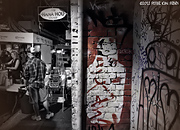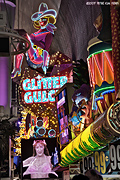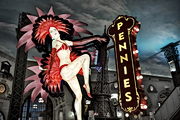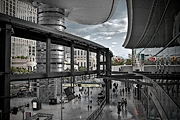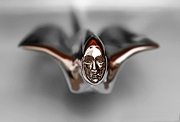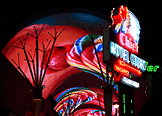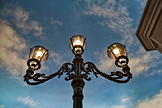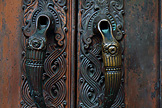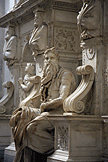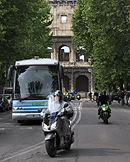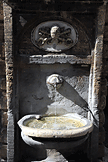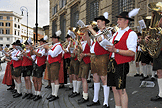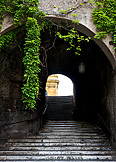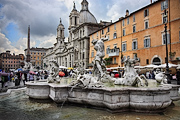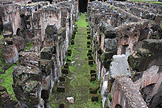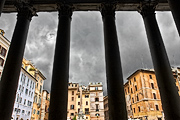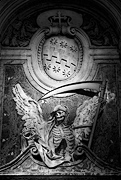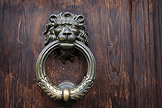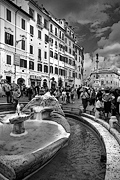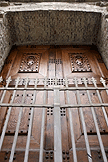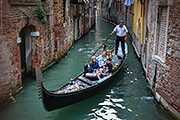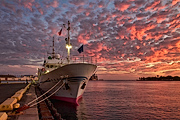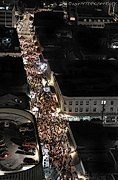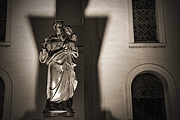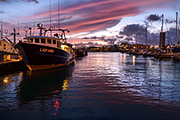|
.
Canon EF-s 17-55 2.8 IS USM
The Big Kahuna Walk-Around Zoom
Peter Kun Frary
.
.
If you own a Canon APS-C format (1.6X crop) camera such as an EOS Rebel, 80D or 90D, it probably came with an 18-55 or 18-135 kit lens. And with good reason: this type of lens is ideal for general photography because it encompasses wide, normal and short telephoto ranges. Mount one on your camera and you're ready for scenics, group shots, candids and portraits. For weekend shooters, this may be the only lens they need.
Dragon Dance | Honolulu | EOS 50D and EF-S 17-55 2.8 IS USM

 Kit Lens Upgrade Kit Lens Upgrade
Most kit zooms have a slow and variable maximum aperture, typically F3.5 to 5.6. Slow and variable maximum apertures are not ideal for low light or rendering pleasant bokeh. Plus, designers often cut corners on kit lens build quality and optical performance. Fortunately, if you prefer the wide to short telephoto range of a kit lens, but crave better optical and low light performance, there is hope: the Canon EF-S 17-55 2.8 IS USM.
Canon EF-S17-55 2.8 IS USM | APS-C bazooka | Photo courtesy Canon
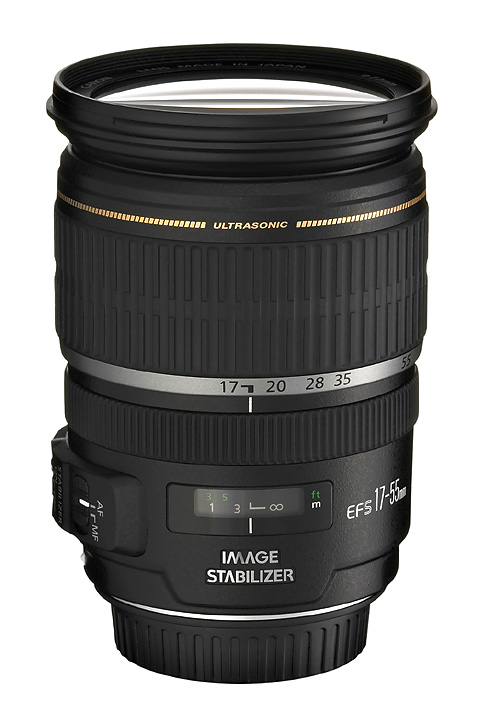
Canon EF-S 17-55 2.8 IS USM
The big deal about this lens is the constant F2.8 maximum aperture. In other words, you can set F2.8 in manual mode and it stays at F2.8 regardless of zoom setting. The downside is the constant F2.8 maximum aperture makes this lens as large as mini bazooka.
It also features a 3-stop image stabilizer (IS), ring-type USM, 3.24x zoom range, and near L series optical performance. The zoom range of 17 to 55 on APS-C is equivalent to 27 to 88mm coverage on full frame cameras.
Currently, a new EF-S 17-55 2.8 IS USM retails for just under $900 USD.
 Compatibility Compatibility
The EF-S 17-55 2.8 IS USM is designed for APS-C (1.6X) Canon EOS DSLR cameras such as the Rebel SL3 and 90D. It may be used on R and M series mirrorless cameras with a mount adapter. Full frame R series cameras such as the EOS R and R6 MK II, automatically revert to 1.6X crop mode. This lens cannot be used on full frame Canon EOS DSLRs with an EF mount and non-Canon cameras such as Pentax, Nikon, Fuji, etc.
Richard MacDonald | EOS 40D and EF-s 17-55 2.8 IS USM

 Construction Construction
Due to the constant F2.8 aperture and image stabilization, this lens is a big bruiser, and may be front heavy on smaller cameras. Build quality is excellent: good fit and finish, sturdy plastics, beefy switches, and metal lens mount. It lacks weather seals and has a narrow manual focus ring. The gold decorative ring imparts a 1990s vibe, albeit a 2006n design.
The twist zoom action is damped, smooth and doesn't creep. When zoomed to 55mm, the nested barrel extends, nearly doubling in length. A ribbed rubber surface adorns the ample zoom ring, making for a secure grip. Finally, a distance window in feet and meters helps users prefocus based on distance estimates.
Southern Koʻolau Range and Nuʻuanu Valley | EOS R7, EF-s 17-55 2.8 IS USM and Mount Adapter EF-EOS R | 33mm at F4.5
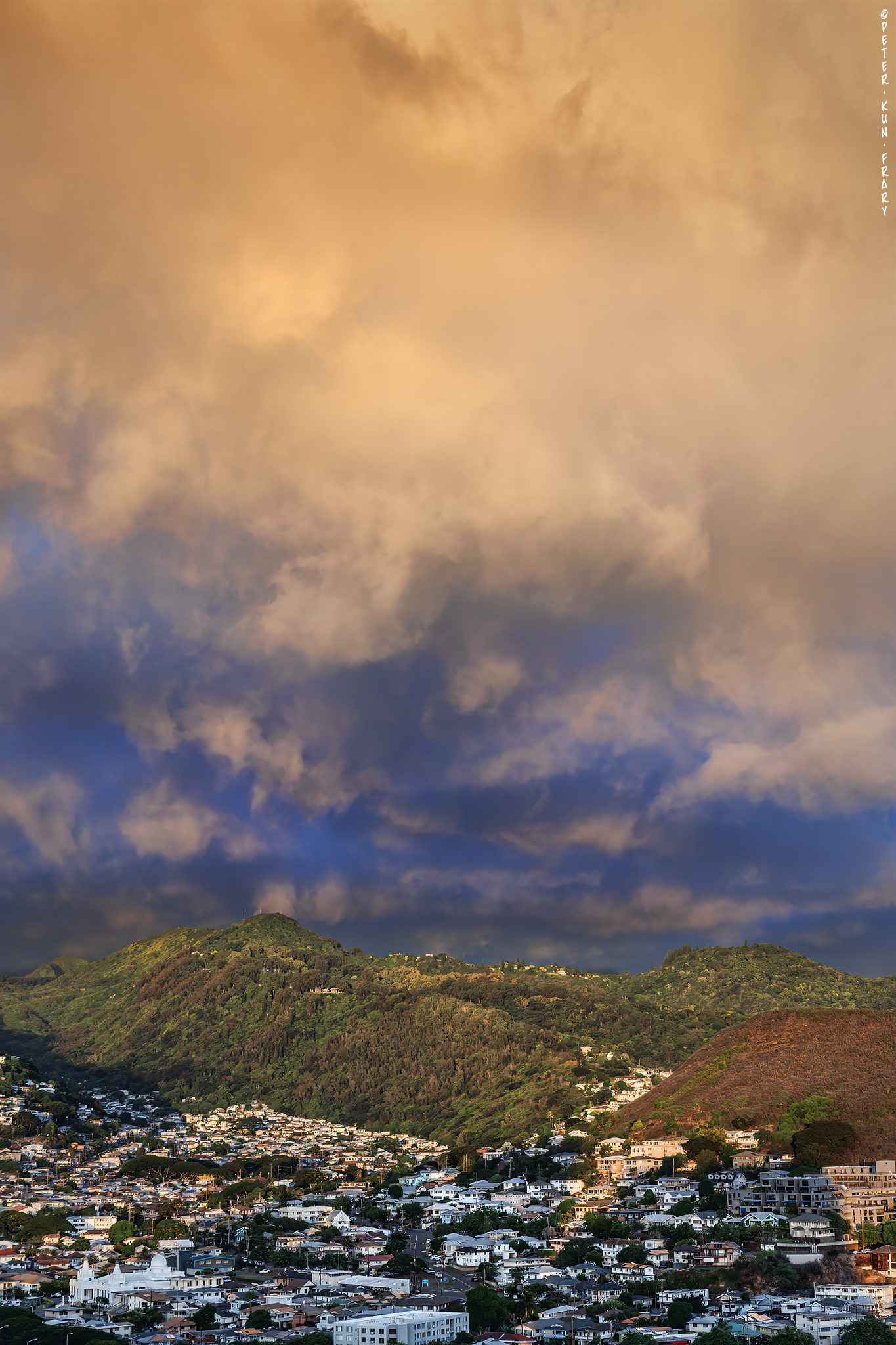
 Lens Hood Lens Hood
Unfortunately, Canon does not include a lens hood with the EF-S 17-55 2.8 IS USM, although the lens is certainly priced well into L lens territory. Instead, the EW-83J Lens Hood is available as an accessory for about $45.
Canon EW-83J | Photo courtesy Canon
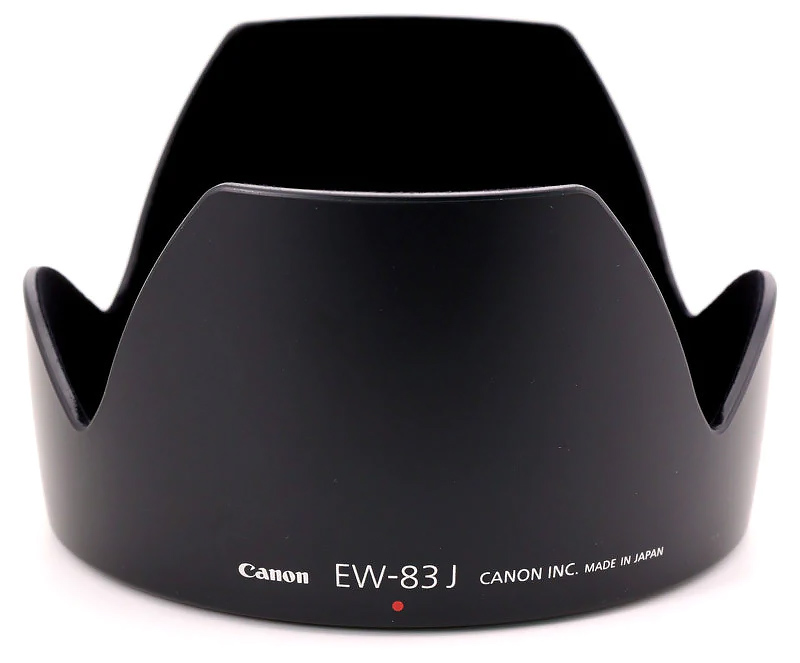
Incidentally, the slightly shallower Canon EW-83H Lens Hood for the EF 24-105mm f/4L IS USM Lens fits perfectly, doesn't vignette, is just as handsome but priced a little lower. If you wish to save more money, knockoff EW-83J hoods are available from JJC and others on Amazon and Ebay.
 Focus Focus
A ring-type Ultrasonic Motor drives an internal lens group and AF is fast, silent and sure-footed on my 90D and R7 (with adapter). The front element doesn't rotate or extend during focusing.
The focus ring is narrow and coarse in pitch, so not ideal for video pulls but okay for normal photography. Although not a macro lens, it focuses close enough for head shots (35cm/.17x) and large flowers.
Vintage Door Handle | EOS 7 and EF-S 17-55 2.8 IS USM at 55 mm and F3.5.
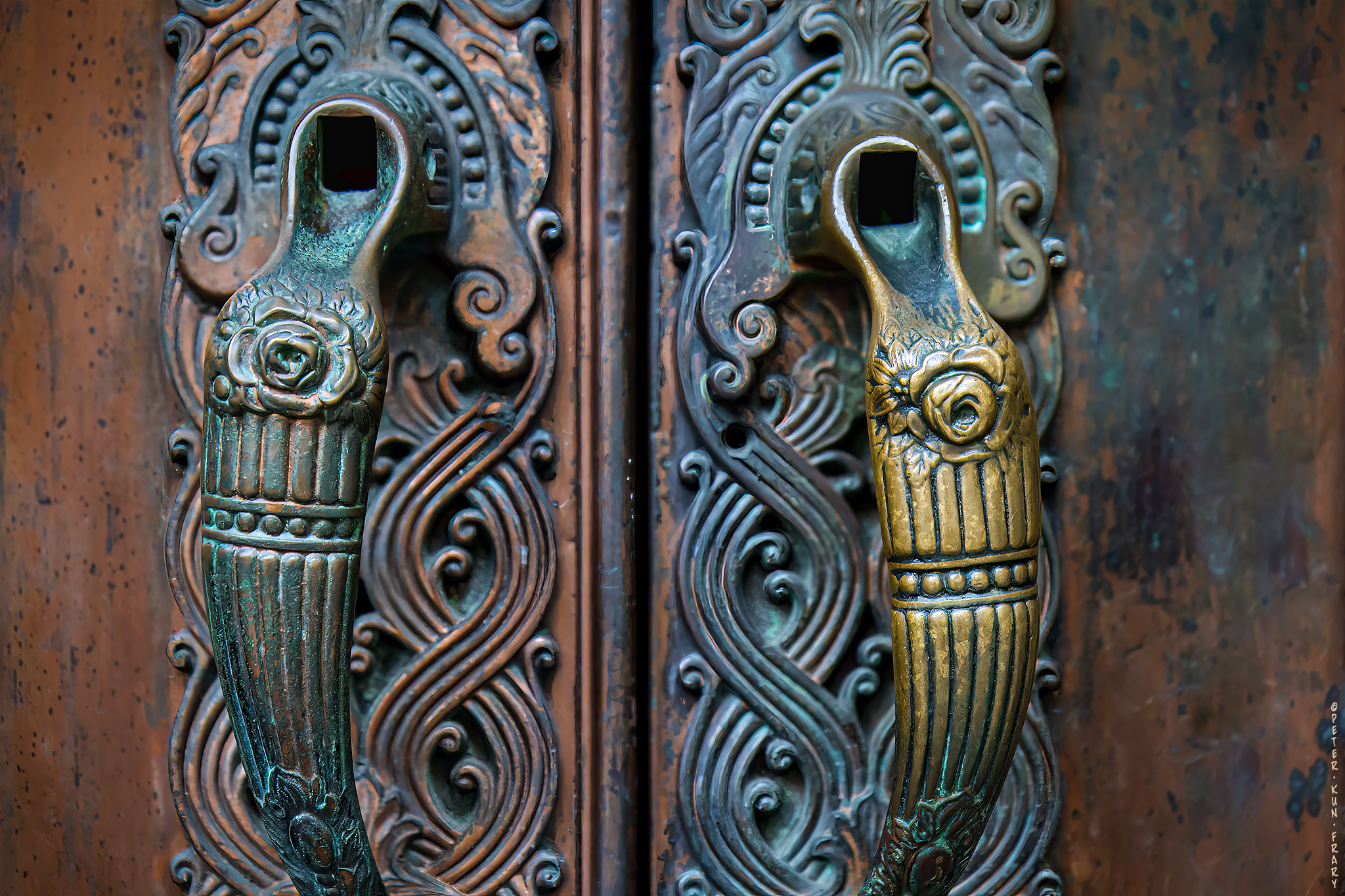
FTM
The full-time manual (FTM) feature of this lens allows manual focus without flipping the AF/MF switch. To use this FTM, leave the shutter button half-depressed during MF operation. Once satisfied with focus, press the shutter button all the way to take the picture. FTM works in one-shot mode and can't be used during AI servo.
 Servo Focus Servo Focus
AI servo mode works well enough to keep up well with joggers, moving vehicles and wee critters. On an EOS R7, I can use AI servo to recompose while keeping AF locked on a static subject. This lens is compatible with Movie servo during video, but is not as smooth as STM or Nano USM. Although inaudible to most human ears, the sound of the USM drive is picked up by the camera's built-in mics during video recording (chirps). The workaround is to use an external mic or outboard audio. If video is your main thing, invest in a STM or Nano USM equipped lens.
Glitter Gulch Las Vegas | EOS 40D and EF-S 17-55 2.8 IS USM
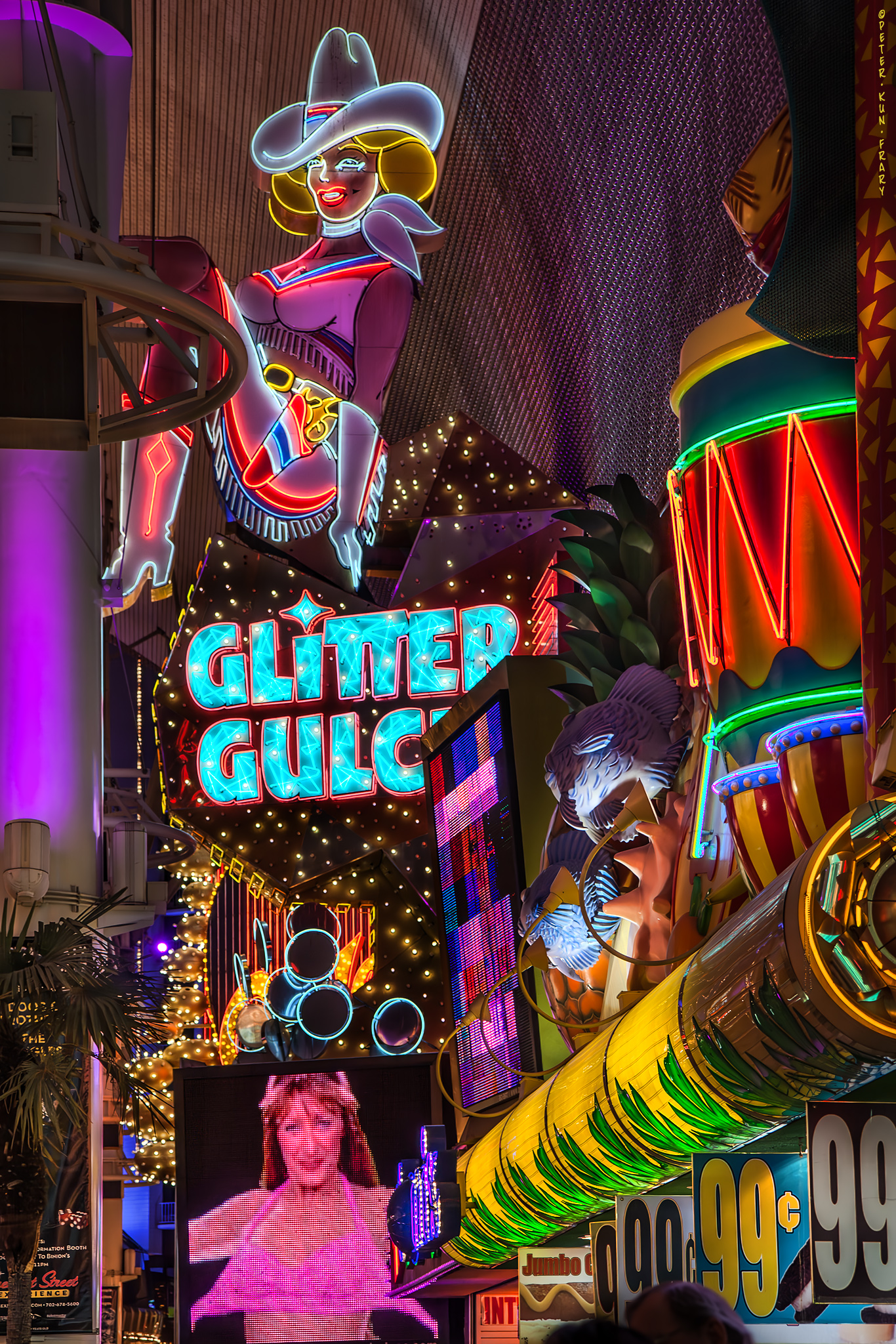
 Image Stabilization Image Stabilization
Image stabilization employs tiny gyro sensors inside the lens to detect the degree and direction of camera shake and counteract by moving a compensating optical group. I almost always get a sharp picture, even three stops below my normal hand held shutter speed. If I brace myself or shoot a volley of shots I can get away with another stop. Combined with F2.8, I can snag images in dim museums and churches without resorting to extreme ISO settings.
Here's what Papa Canon says about IS in the 17-55:
...equipped with such features as the company’s high-performance Image Stabilizer (IS), which provides the equivalent effect of a shutter speed three stops faster, and full-time manual focus...
While an able stabilizer for general photography, it lacks panning mode and hybrid IS (correction in both the vertical plane and back and forth motions) common in Canon lenses during the second decade of the 21st century. However, it detects when the camera is mounted on a tripod and adjusts accordingly.
IS Sound
I consider the IS mechanism of the EF-S 17-55 2.8 IS USM to be pianissimo, but not silent. In a quiet room, I can hear a subdued hum after touching the shutter button. It's softer than my EF 70-200 4L IS USM but louder than the IS in the EF-S 15-85 3.5-5.6 IS USM. If shooting video, use an external mic as the hum may be evident during quiet scenes.
Rape of Sabine Women | Firenza, Italia | EOS 40D and EF-S 17-55 2.8 IS USM

 Image Quality Image Quality
The brightness and snap of this lens is apparent through the viewfinder. After all, there's plenty of exotic glass in there: three aspherical lens elements (one glass molded, two replica) and a UD (ultra-low dispersion) lens element.
When I bought this lens in 2006, I thought, great balls of fire, it's sharp edge to edge at F2.8 from 17mm to 55mm. Of course my 20D had an 8MP sensor! With the 32.5MP sensor of the EOS R7, all was revealed and I revised my verdict.
Shooting with my EOS R7, this lens is sharp center frame at F2.8 at all focal lengths. However, it exhibits considerable softness in corners at 17 and 18mm. Corners sharpen up nicely by closing down to F8 or more. By 20mm, corners are much better at F2.8, but still a little soft. Indeed, as you zoom towards the long side, the corners progressively tighten up until almost equally sharp across the frame from 35mm to 55mm and F2.8.
Honolulu Harbor | EOS R7 and EF-S 17-55 2.8 IS USM at 17mm and F2.8

100% Crops | Lower left corner and mid-frame (17mm at F2.8). Stopping down to F5.6 or F8 improves corners considerably at 17mm.
 |
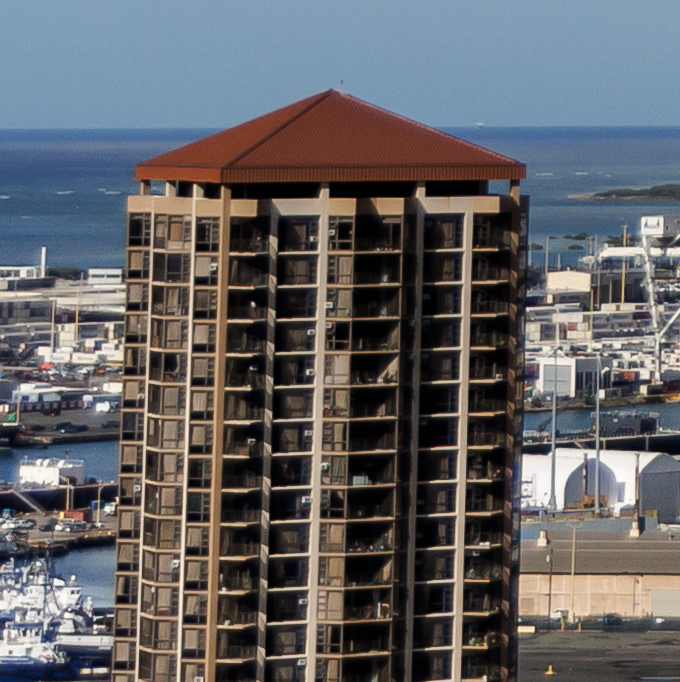 |
Flare
Flare suppression is good: flare is not apparent save for bright sunsets. As a point of comparison, typical Hawaiian sunsets result in more ghosting and flare than my EF-S 15-85 3.5-5.6 IS USM, but less than my EF 28-135 3.5-5.6 IS USM.
Coma
One of the irritating things about the popular Canon EF 50 1.8 (nifty-fifty) was the rendering of off-axis streetlights and stars with comet like flare—an aberration known as coma. Sadly, the EF-S 17-55 2.8 IS USM suffers from the same condition during night photography, albeit mainly on the wide range of the zoom.
Wide open at F2.8 and 17mm, the center of the frame is clean but coma is present in points of light—stars or streetlights—on the periphery. This comet like flare also displays a small amount of chromatic aberration—i.e., purple fringing. Thankfully, coma and purple fringing are progressively reduced as one stops down: significantly reduced by 4 and nil by F5.6.
Also, as you zoom towards the long end, coma is reduced progressively and is close to zero by 55mm F2.8. This lens is not my first choice for astronomy or city nightscapes, but will do a good job if you stop down or zoom out a little. All of my other zooms also exhibit coma wide open—even L series zooms—so the EF-S 17-55 2.8 IS USM is average in this regard.
Fremont Casino | Las Vegas, USA | EOS 7D and EF-S 17-55 2.8 IS USM
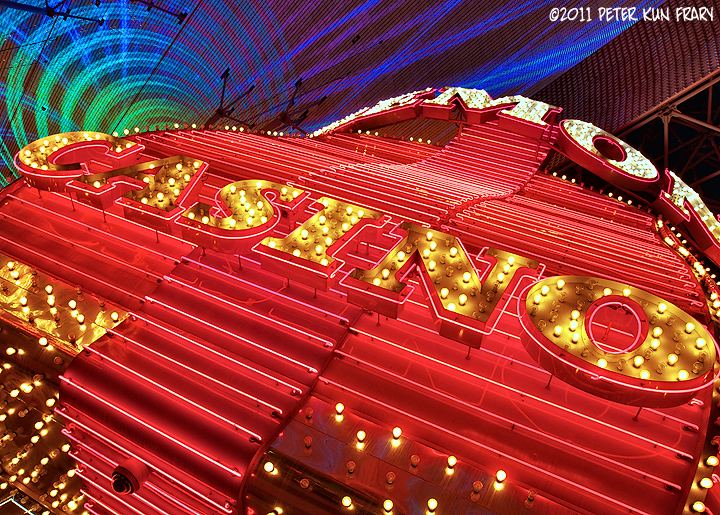
Distortion
The short end, like most wide zooms, exhibits a wee bit of barrel distortion. The long end has slight pincushion distortion. With that said, distortion is less pronounced than the EF 24-105 4L IS USM and EF-S 15-85 3.5-5.6 IS USM. I normally don't notice distortion. If it bothers you, it is easily removed by clicking on lens profile correction in Lightroom or DPP.
Light Fall-Off
Like most zooms, the EF-S 17-55 2.8 IS USM exhibits light fall-off when shot wide open. At F2.8 the lens shows pronounced vignetting of about 1 stop or more at all focal lengths, and is most evident at 17mm. Stopping down reduces light fall-off and from f/4 onwards it's reasonably well controlled, albeit still slightly visible even at F8. If you're shooting JPEGS, newer cameras correct light fall-off by lightening corners. For RAW images, the lens profile in Lightroom and similar programs nixes the vignette, albeit such corrections may result in smeared and grainy corners. If you toggle the profile on and off you can easily see the difference between the corrected and uncorrected images.
In typical night scenes and portraits, I don't notice light fall-off since edges are naturally dark or deemphasized. For landscapes, light fall-off is problematic. The best solution is to stop down to F8 or a little more for sharp and well-lit corners at the 17 or 18mm zoom settings.
Chiesa degli Scalzi | Venice, Italy | EOS 40D and EF-S 17-55 2.8 IS USM
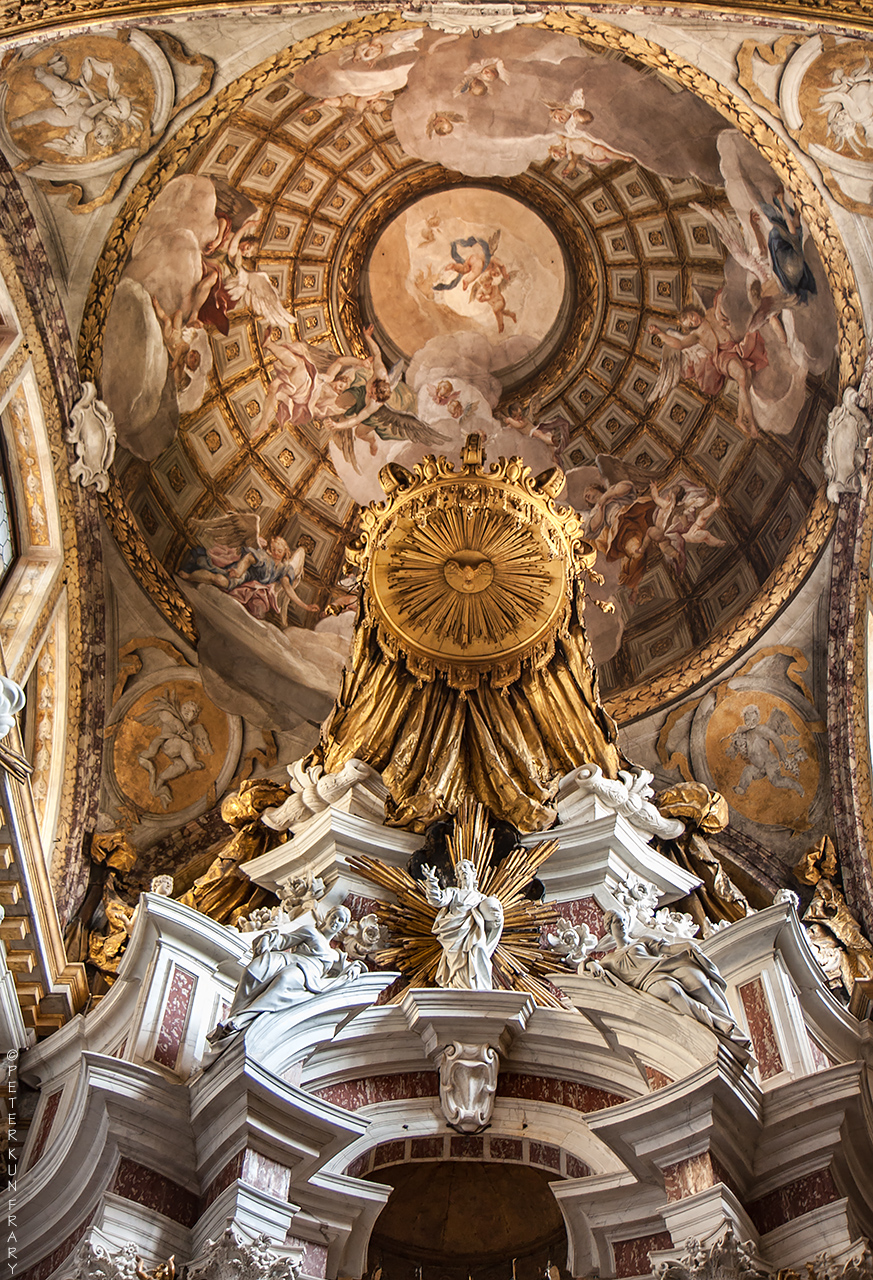
Popup Flash Blocked?
I was surprised to find the popup flash of my 50D and 7D usable with this lens. I assumed such a bulky lens would completely block the popup but such is not the case. At 17mm from 2 meters out there is no shadow from the lens. At closer distances there is a small shadow at the bottom of the frame. For daylight fill, it is normally unnoticeable.
Incidentally, the EF-S 17-55 2.8 IS USM transmits distance information to the E-TTL II flash algorithm to help improve flash exposure accuracy.
Dust Vac?
The vents behind the front element retaining ring suck in dust during zoom and focus operations. However, dust problems mainly come from lenses lacking UV filters. The filter prevents most dust from being draw in. I've always used a UV filter for protection and my EF-S 17-55 2.8 IS USM is clean after many years of use in deserts, streets, beaches and smoky bars.
Red Goose Shoes | Las Vegas | EOS 50D and EF-S 17-55 2.8 IS USM
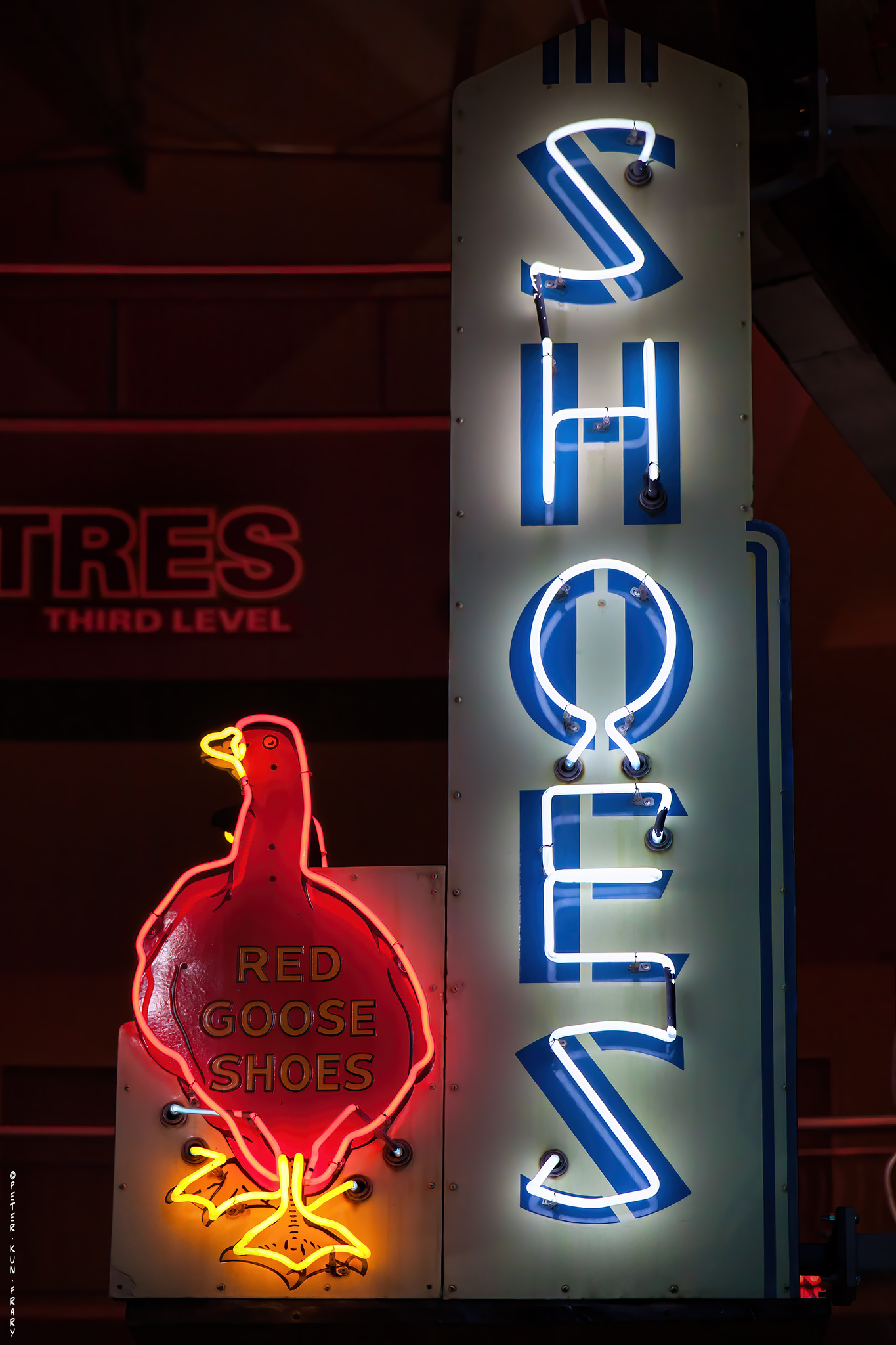
If you went without a filter and find a barrel full of lint inside, you
may find these dust images and fix enlightening.
 Last Blurb Last Blurb
This is the big kahuna royale of normal APS-C zooms: stout, well made, generally sharp and fast focusing. However, the 32.5MP sensor of the EOS 90D and R7 revealed warts on the wide end I hadn't noticed on my older cameras: soft corners wide open at F2.8. Nevertheless, this lens is still impressively sharp throughout most of its range even on modern high density sensors.
The combination of 3-stop IS and fast aperture make it ideal for available light shooting on city streets and in dim building interiors. I feel confident to shoot wide open in most situations and bring back vivid sharp images. I bought this lens new in 2006 and loved it for travel, humping it from Vegas to Venice without a whimper or glitch.
Finally, please help support this website by purchasing this lens at Amazon.
 
More Images taken with the EF-S 17-55 2.8 IS USM (click to enlarge).
 Specifications Specifications
Focal Length: 17-55 mm
Maximum Aperture: F2.8
Minimum Aperture: F22
Lens Construction: 12 groups, 19 elements
Angle of View: 78° 30' - 27° 50' (diagonal) | 48° - 15° 40' (vertical) | 68° 40' - 23° 20' (horizontal)
Min. Focusing Distance: 0.35 m/1.2 ft.
Max. Magnification: 0.17 x (at 55 mm)
Field of View approx. 207 x 310 - 88 x 131 mm (8.1 x 12.2 - 3.5 x 5.2")
Filter Diameter: 77mm
Diameter and Length: 83.5 x 110.6 mm (3.3 x 4.4")
Weight: 645 g (22. 7 oz)
MAP: $879 USD
Accessories
Lens Cap E-77U/E-77 II
Hood EW-83J
Case LP1219
 Source Materials Source Materials
Canon EFS
Lens EF-S17-55mm F/2.8 IS USM Instruction. Tokyo:
Canon, 2006. (CT1-7561-001).
01/11/2007 | Revised 10/27/2023

©Copyright 2007-24 by Peter Kun Frary | All Rights Reserved
|





Last Blurb
 Specifications
SpecificationsSource Materials


 Compatibility
Compatibility







